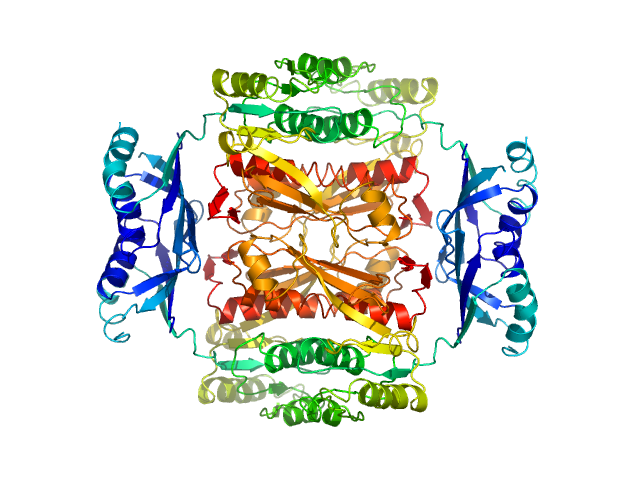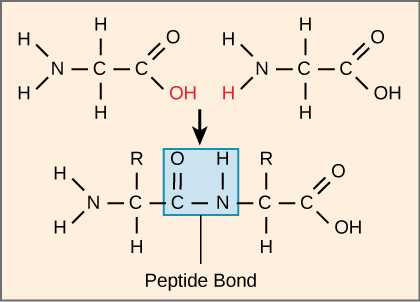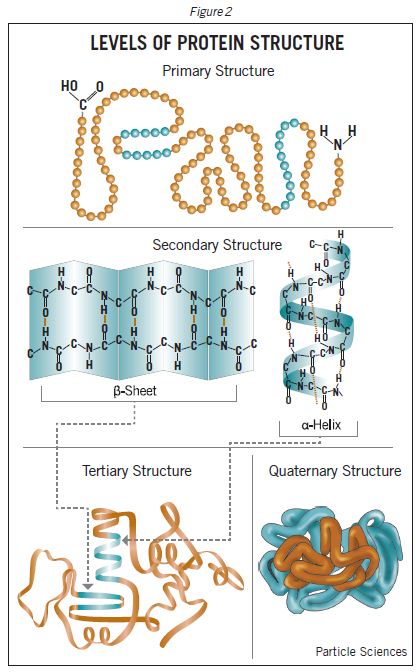Biology
 Proteins are polypeptides. i.e., linear chains of amino acids linked by peptide bonds.
Proteins are polypeptides. i.e., linear chains of amino acids linked by peptide bonds.
A Peptide bond is formed when ?COOH group of one amino acid reacts with ?NH2 group of next amino acid by releasing a molecule of water (dehydration).

Proteins are Heteropolymer of amino acids. i.e, different types of amino acids are linked through peptide bonds to form protein.
There are 20 types of amino acids involved in protein synthesis. They are

- Gene Mutation
A gene mutation is a change in one or several bases. A base may be added, deleted, or substituted with another base. This is caused often through the action of damaging chemicals, radiations, or through errors inherent in DNA replication and repair reactions....
- Amino Acid Activation
Codons of an mRNA molecule contain genetic messages that are carried by the mRNA and they need to be translated to form the corresponding sequence of amino acids that will form the polypeptide chain and subsequently the protein. The tRNA transfers amino...
- Using The Genetic Code
The sequence of a coding strand of DNA, read in the direction from 5 to 3, consists of nucleotide triplets (codons) corresponding to the amino acid sequence of a protein read from N-terminus to C-terminus. Sequencing of DNA and proteins makes it possible...
- Messenger Rna
KEY TERMS:Messenger RNA (mRNA) is the intermediate that represents one strand of a gene coding for protein. Its coding region is related to the protein sequence by the triplet genetic code. Transfer RNA (tRNA) is the intermediate in protein...
- #13. Protein - Primary, Secondary, Tertiary And Quaternary Structure
Amino acids can be linked together in any order to form a long chain - polypeptide. Protein molecules can be made up of the same polypeptides or different polypeptides. 1. Primary structure: The sequence of amino acids in a polypeptide or protein...
Biology
Proteins
PROTEINS

A Peptide bond is formed when ?COOH group of one amino acid reacts with ?NH2 group of next amino acid by releasing a molecule of water (dehydration).

Proteins are Heteropolymer of amino acids. i.e, different types of amino acids are linked through peptide bonds to form protein.
There are 20 types of amino acids involved in protein synthesis. They are
- Alanine (Ala)
- Arginine (Arg)
- Asparagine (Asn)
- Aspartic acid (Asp) )
- Cystein (Cys)
- Glutamine (Gln)
- Glutamic acid (Glu)
- Glycine (Gly)
- Histidine (His)
- Isoleucine (Ile)
- Leucine (Leu)
- Lysine (Lys)
- Methionine (Met)
- Phenyl alanine (Phe
- Proline (Pro)
- Serine (Ser)
- Threonine (Thr)
- Tryptophan (Trp)
- Tyrosine (Tyr)
- Valine (Val)
Amino acids are 2 types:
- Essential amino acids: They cannot be synthesized by the body and should be supplied through diet. E.g. Lysine, leucine, isoleucine, tryptophan etc.
- Non-essential amino acids: They can be synthesized by the body. E.g. Glycine, alanine, serine, arginine etc.
- For growth and tissue repair.
- Many proteins transport nutrients across cell membranes. E.g. GLUT-4 enables glucose transport into cell.
- Many proteins act as intercellular ground substance. E.g. collagen.
- Some proteins function as antibodies to fight infectious organisms (pathogens) such as bacteria.
- Some proteins act as receptors. E.g. receptors of smell, taste, hormones etc.
- Many proteins are hormones. E.g. Insulin, glucagon etc.
- Many proteins act as enzymes. E.g. trypsin, pepsin, lactase, sucrase etc.
- Some proteins act as pigments. E.g. hemoglobin, myoglobin, chlorophyll etc.
Most abundant protein in animal world: Collagen
Most abundant protein in the biosphere: Ribulose biphosphate carboxylase - oxygenase (RuBisCO)
Structural Levels of protein
Proteins have 4 structural levels. They are
- Primary structure
- Secondary structure
- Tertiary structure
- Quaternary structure

- Primary structure: It describes the sequence of amino acids, i.e. the positional information in a protein. Left end of the chain has first amino acid (N-terminal amino acid). Right end has last amino acid (C-terminal amino acid).
- Secondary structure: A protein thread is folded in the form of a helix. It has only right handed helices.
- Tertiary structure: Long protein chain is folded upon itself like a hollow woolen ball. It gives 3-D view of protein. Tertiary structure is necessary for many biological activities of proteins.
- Quaternary structure: Some proteins are an assembly of more than one polypeptide or subunits. E.g. Hb has 4 subunits (2 ? subunits and 2 ? subunits).
- Gene Mutation
A gene mutation is a change in one or several bases. A base may be added, deleted, or substituted with another base. This is caused often through the action of damaging chemicals, radiations, or through errors inherent in DNA replication and repair reactions....
- Amino Acid Activation
Codons of an mRNA molecule contain genetic messages that are carried by the mRNA and they need to be translated to form the corresponding sequence of amino acids that will form the polypeptide chain and subsequently the protein. The tRNA transfers amino...
- Using The Genetic Code
The sequence of a coding strand of DNA, read in the direction from 5 to 3, consists of nucleotide triplets (codons) corresponding to the amino acid sequence of a protein read from N-terminus to C-terminus. Sequencing of DNA and proteins makes it possible...
- Messenger Rna
KEY TERMS:Messenger RNA (mRNA) is the intermediate that represents one strand of a gene coding for protein. Its coding region is related to the protein sequence by the triplet genetic code. Transfer RNA (tRNA) is the intermediate in protein...
- #13. Protein - Primary, Secondary, Tertiary And Quaternary Structure
Amino acids can be linked together in any order to form a long chain - polypeptide. Protein molecules can be made up of the same polypeptides or different polypeptides. 1. Primary structure: The sequence of amino acids in a polypeptide or protein...
